Which roofing material sheds the most and cleanest rain? Because if you’re collecting rain to use in your garden, then you want as much as possible and you don’t want it to be contaminated.
I’ve lived in houses with roofs made of different materials — tile, asphalt shingle, metal — and I’ve collected rain from them all. So I have seen the differences in results firsthand. Let me share what I’ve noticed, as well as what some others have noticed.
Most rain collected
1. Metal
2. Asphalt shingle
3. Tile
Metal roofs shed the most, then asphalt shingle, and tile roofs shed the least, in my observations.
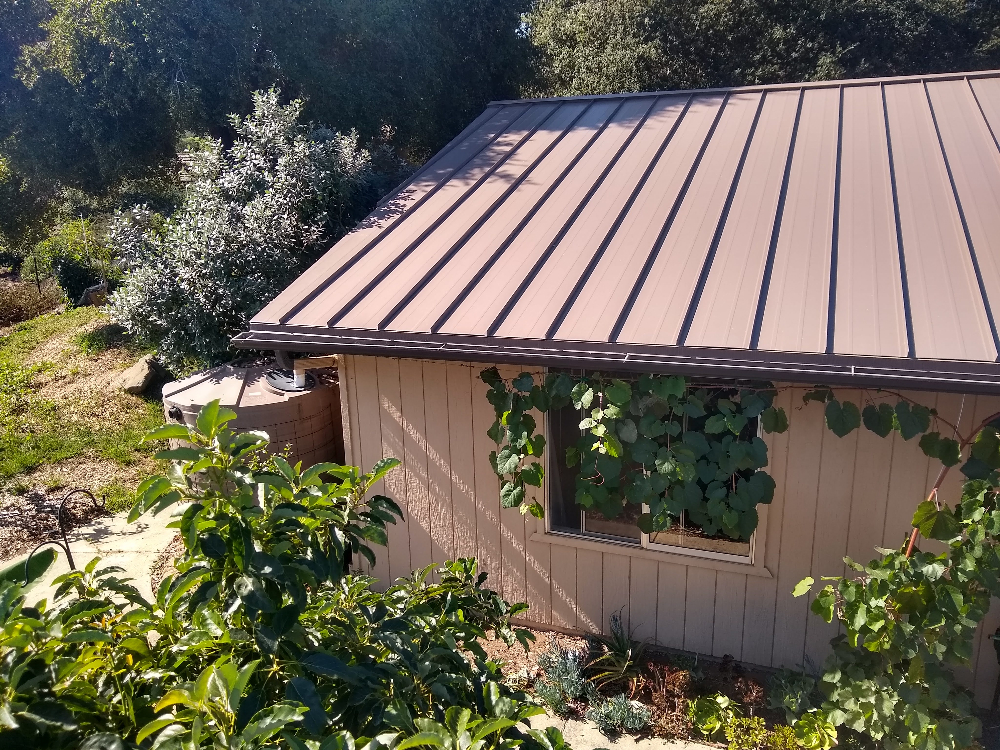
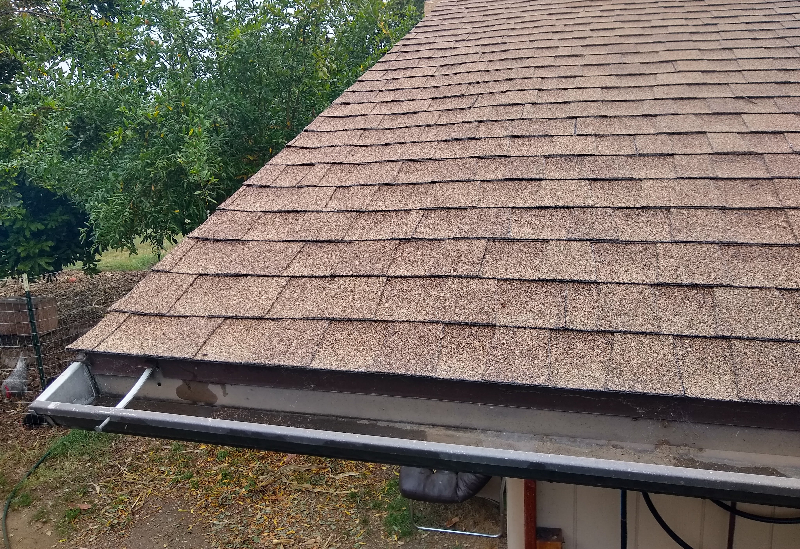
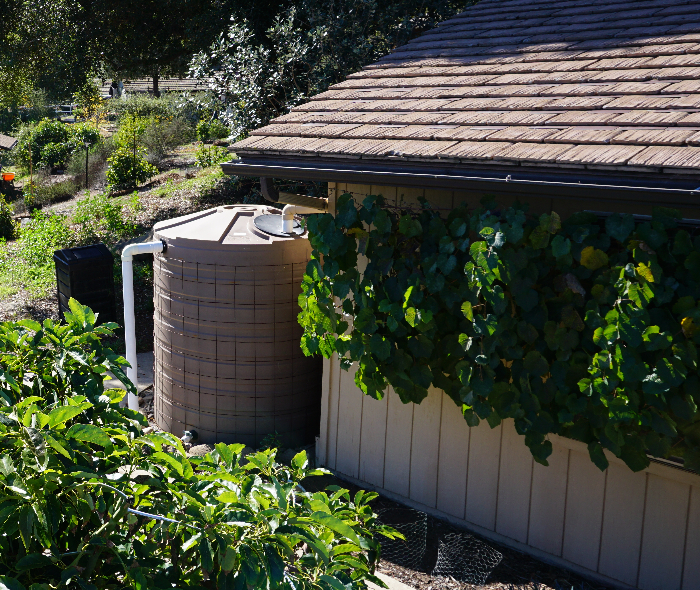
Metal roofs shed the most because they don’t absorb some of the rainfall like the other surfaces do.
Tile especially can absorb a surprising amount of rain when it is coming down very lightly. For a decade, I had concrete tile on my house but asphalt shingle on my workshop, and I noticed that during some very light rains only a few gallons were shed from the tile whereas nearly a hundred gallons came off the asphalt shingle roof of the workshop. This despite the roof of the workshop being far smaller.
Just this year, we replaced our house’s tile roof with metal. This gave me a chance to compare metal with the asphalt shingle of the workshop. The metal sheds so well that it doesn’t even need rain! An average morning dew puts gallons into each downspout. For us in Southern California, this means that you’re getting free rainwater every May Gray, June Gloom, and other marine layer morning.
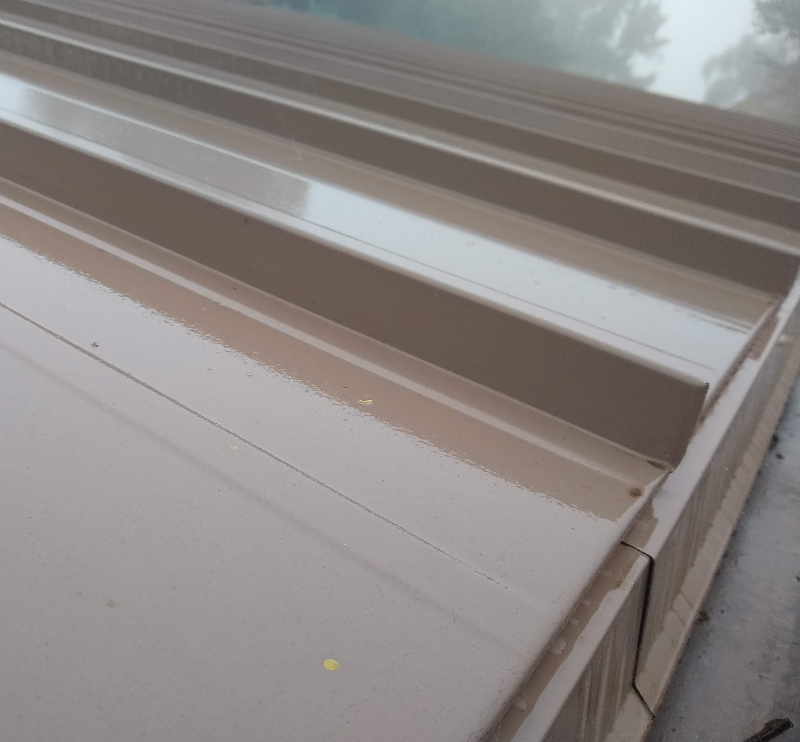
The general order is clear: metal, then asphalt shingle, then tile. It’s hard to get more specific than that about how much each material sheds. I’ve read of runoff coefficients used to calculate how much rain will be shed by each type of roof, but they are not reliable because a lot depends on how much precipitation comes down in a given time (the precipitation rate). In a fog or mist, there is a large discrepancy. Metal is the only material that will shed. However, in a sudden downpour, all roofs shed almost the same amount.
Cleanest rain collected
When ranking roof surfaces for shedding the cleanest rain, we can think of debris we can see and debris we can’t. Bits of roofing material erode as rainwater runs along it, and some of these bits are big, such as the granules that come off an asphalt shingle roof, while others are microscopic, such as lead or bacteria.
I can rank roof surfaces in the first sense based on what I’ve seen eroded and collected in my gutters and rain tanks. In this sense, from cleanest to murkiest:
1. Metal
2. Tile
3. Asphalt shingle
From a metal roof, I only see leaves and dust and other things that have fallen on the roof get washed off with a rain. From a tile roof it is similar, except that on my roof if a section of tile was shaded then moss and other plants would actually grow in the spaces between tiles and bits were sometimes shed in a rain. From an asphalt shingle roof, I see mostly granules eroding. They collect in the gutters and in tank bottoms.
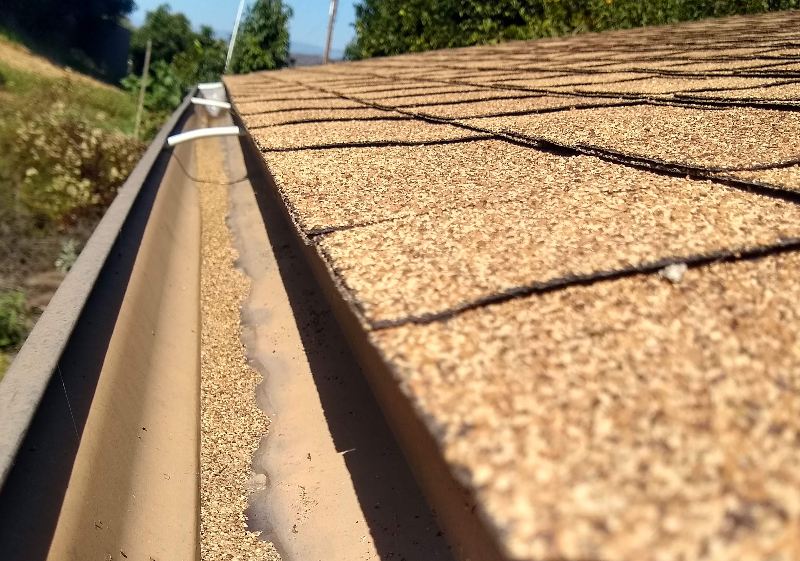
As for the shedding and leaching of microscopic particles, I have to rely on studies done by others, and I’m only aware of one that is somewhat relevant. “Effect of Roof Material on Water Quality for Rainwater Harvesting Systems” was done by a group of researchers affiliated with the University of Texas, Austin in 2011.
They tested rainwater coming off of six roof surfaces, including the most common ones of asphalt shingle, metal (Kynar-coated Galvalume), and concrete tile. They tested for “pH, conductivity, turbidity, total suspended solids (TSS), total coliform (TC), fecal coliform (FC), nitrate, nitrite, dissolved organic carbon (DOC), and selected metals.”
In short, my reading of their data is that each of the three common roofing materials tested at slightly different levels in all categories, but not one was significantly cleaner than the others overall. Based on their data, I’d say all three of these roof materials are safe to collect water from to use on a food garden.
Overall best roof material
If I were choosing a roof based solely on its ability to shed maximum volume and quality rainwater for use in a food garden, I would choose metal.
Choosing tile sacrifices some volume whereas choosing asphalt shingle means dealing with the eroding granules. Using a first-flush diverter would help with keeping the granules out of a tank.
Of course, none of us will choose a roof based solely on how well it can serve our food garden, but . . . more water and cleaner water sure is a nice thing to have.
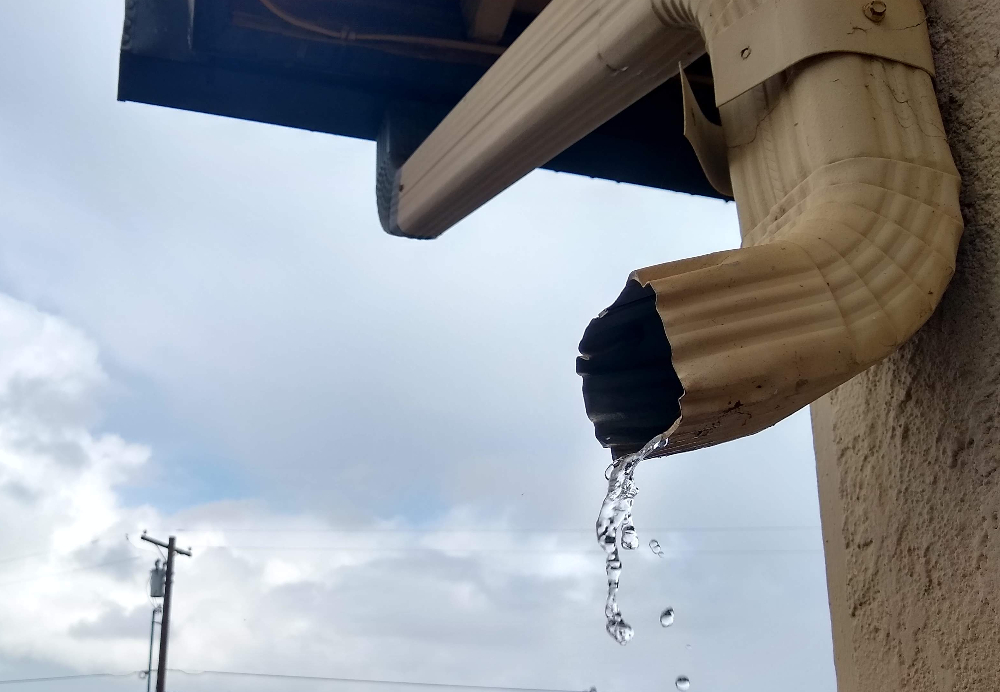
V is for Voluntary. I appreciate it when you choose to support my work. Thanks!
All of my Yard Posts are listed here.

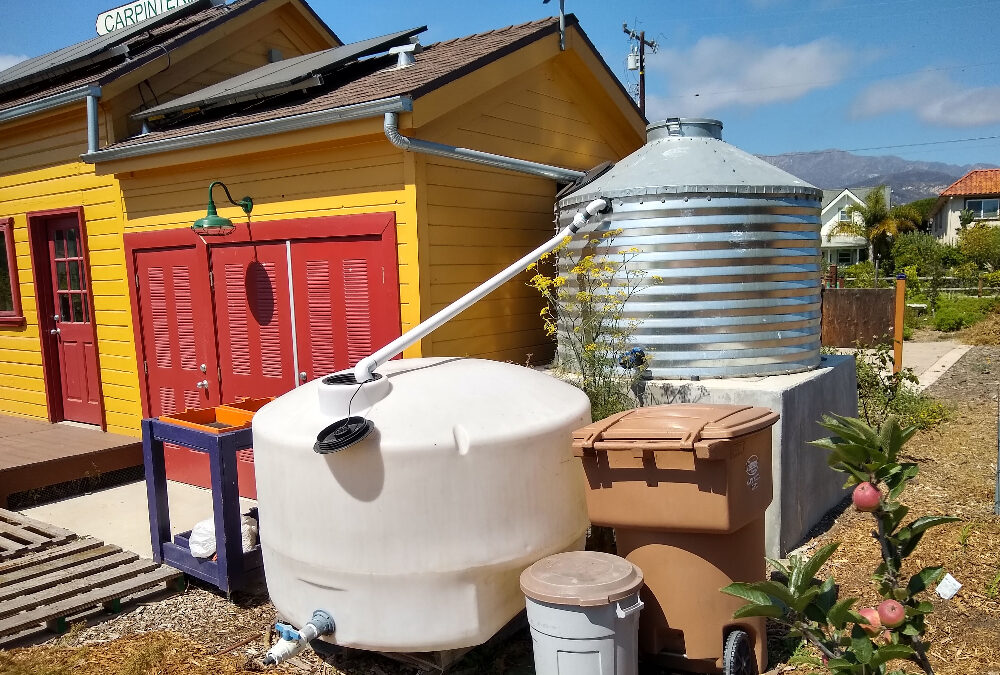


Hi Greg,
I have a sprayed polyurethane roof that is coated with an elastomeric paint. It is great for insulation, keeping attic temps very low, generally same temps as the ambient air. It also sweats each night, i’m sure at least a few gallons, although i’m not sure how much, I’ve never tried to collect it. Also, I think the elastomeric coating may slowly dissintegrate, as I saw some powdery substance from the downspouts, so i’m not sure if it’s good for the garden without some filtering. I don’t think it’s absorbing much water, so probably similar to shingles, may be a little better.